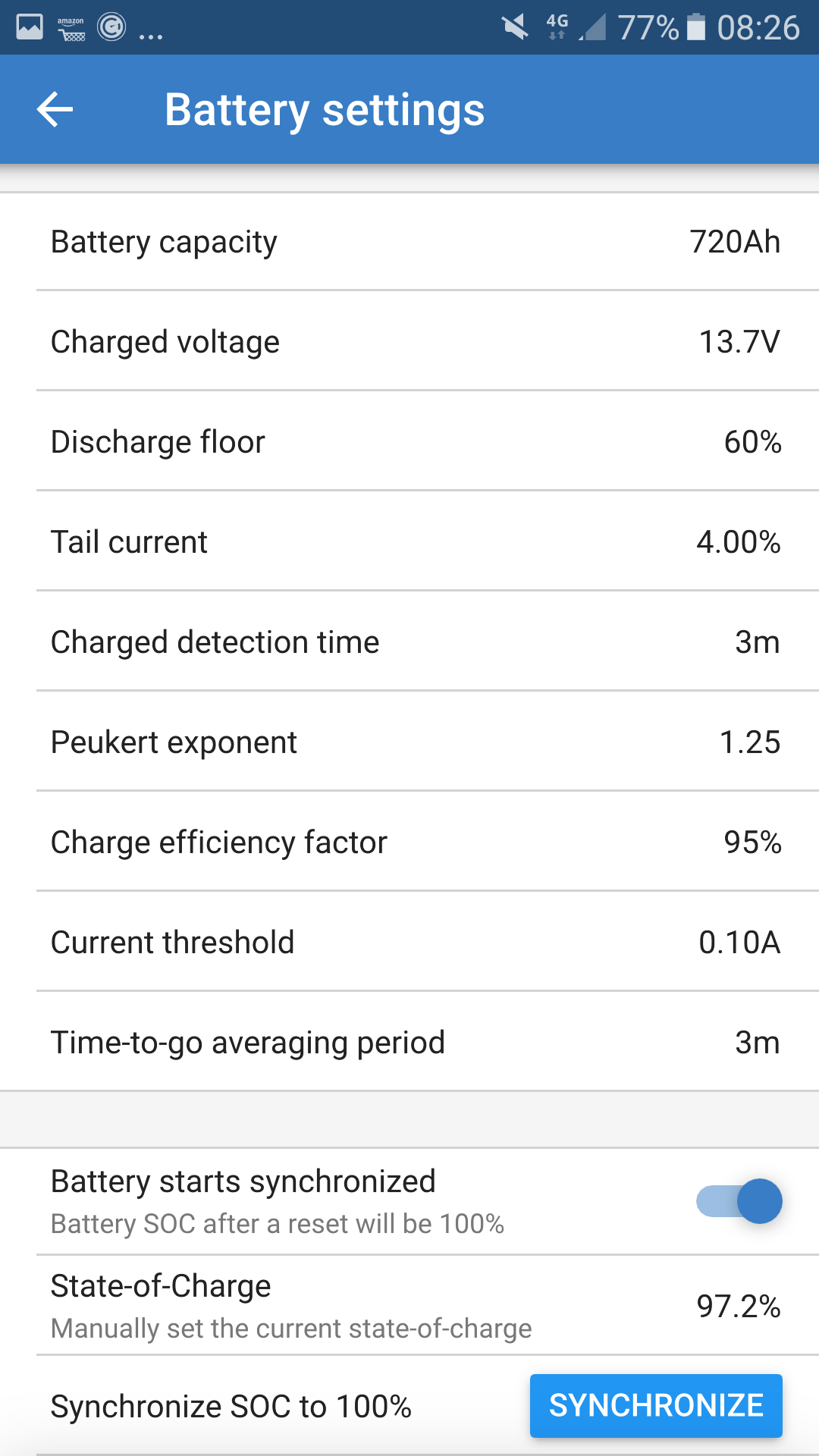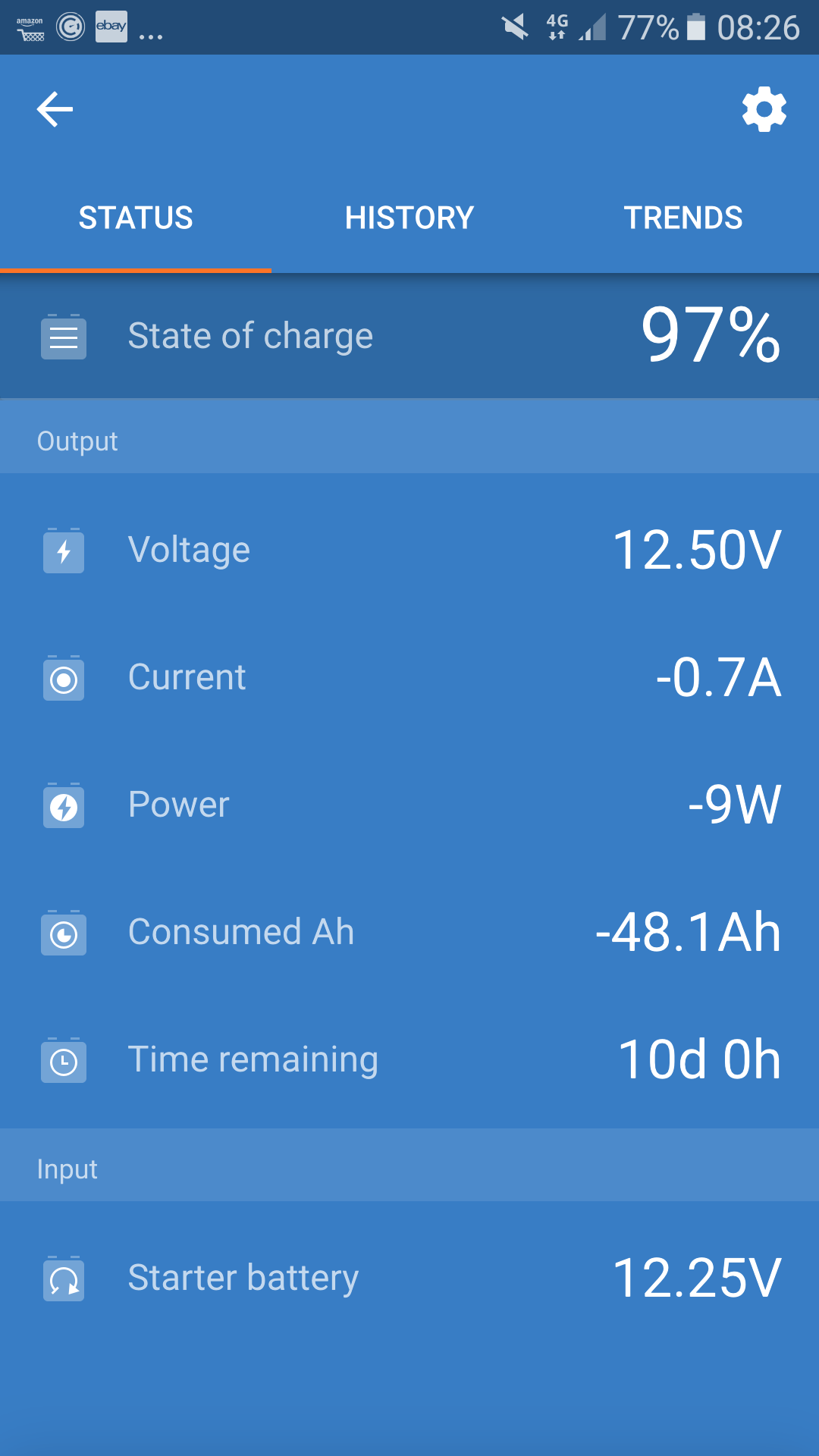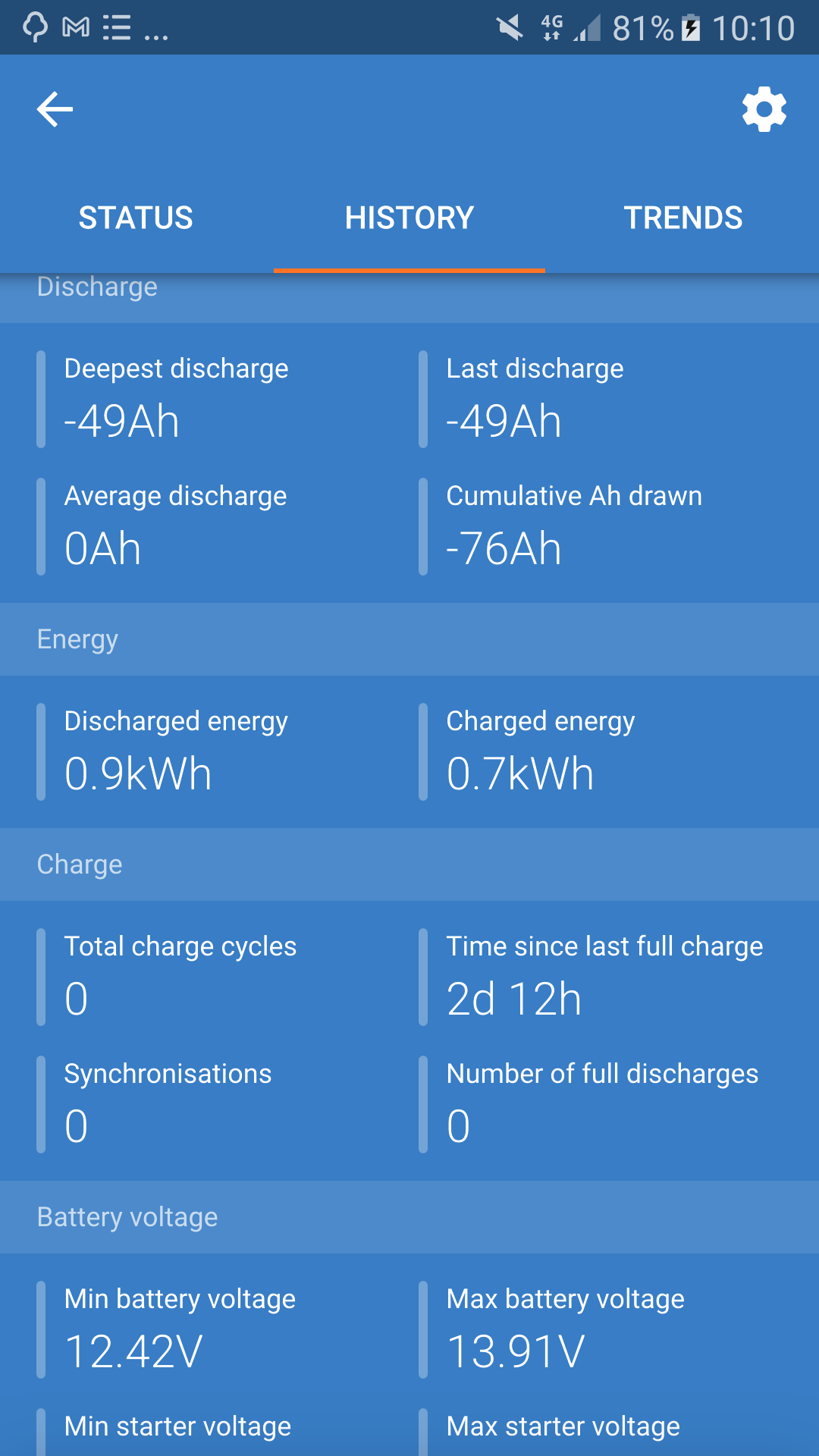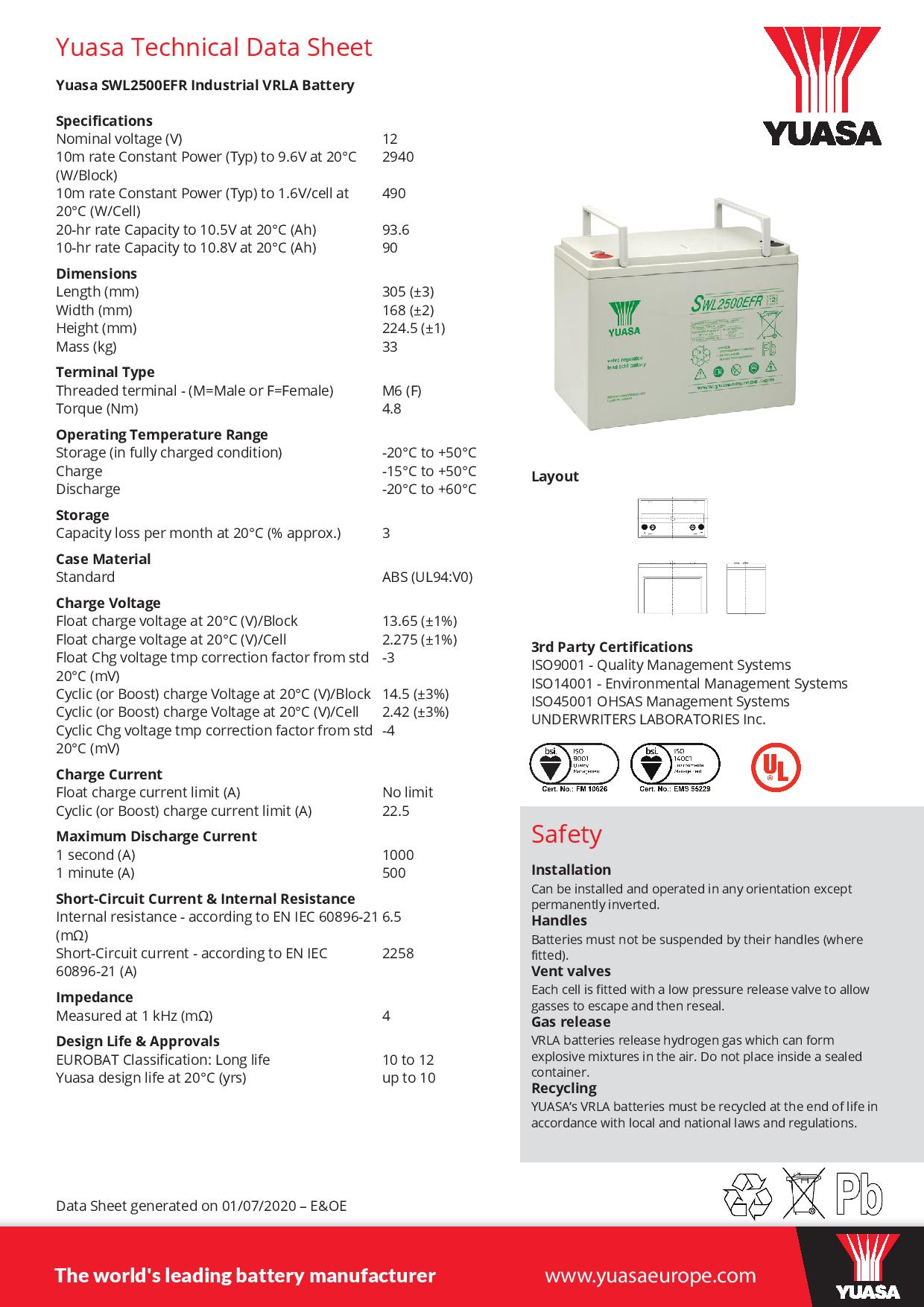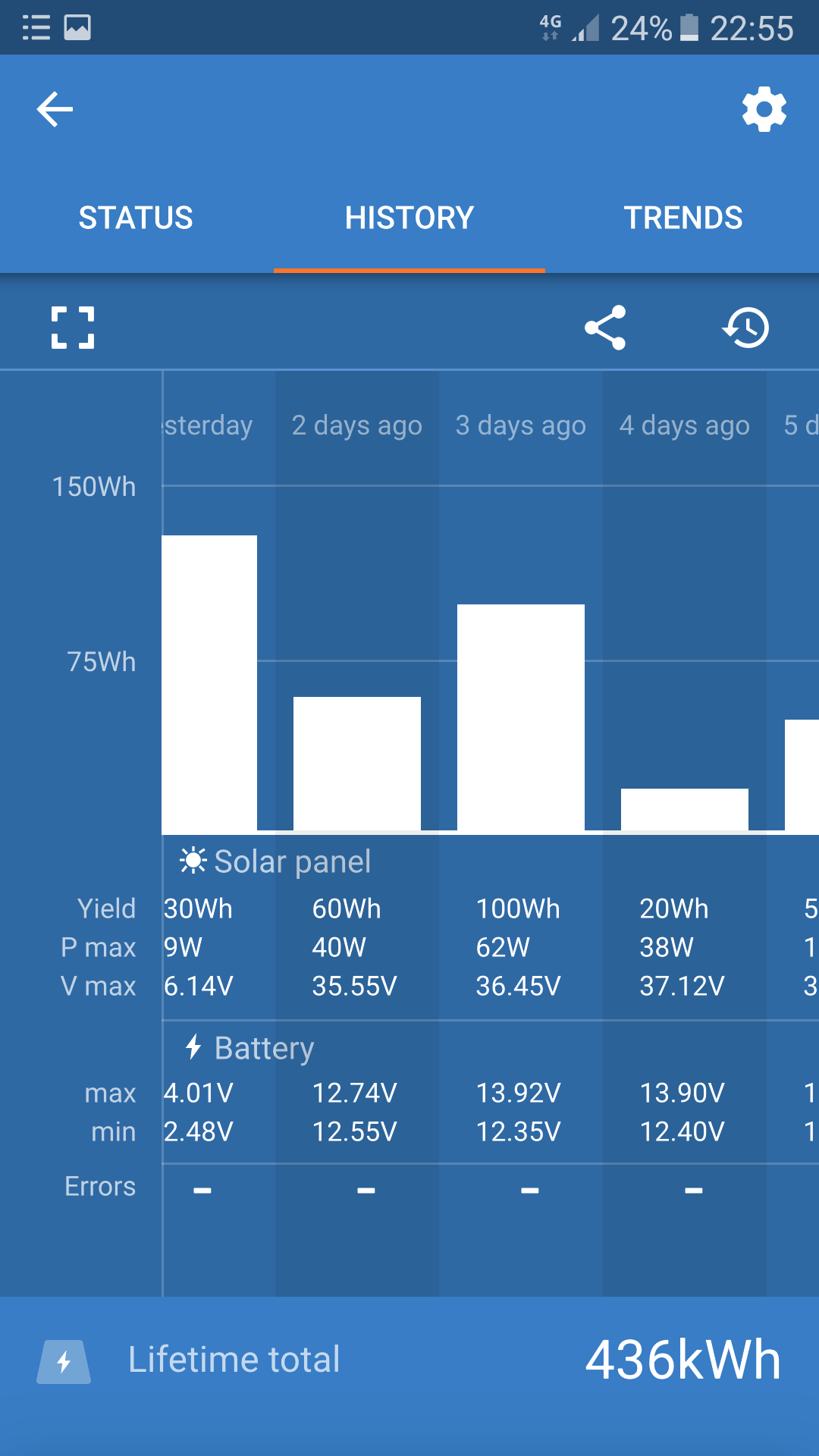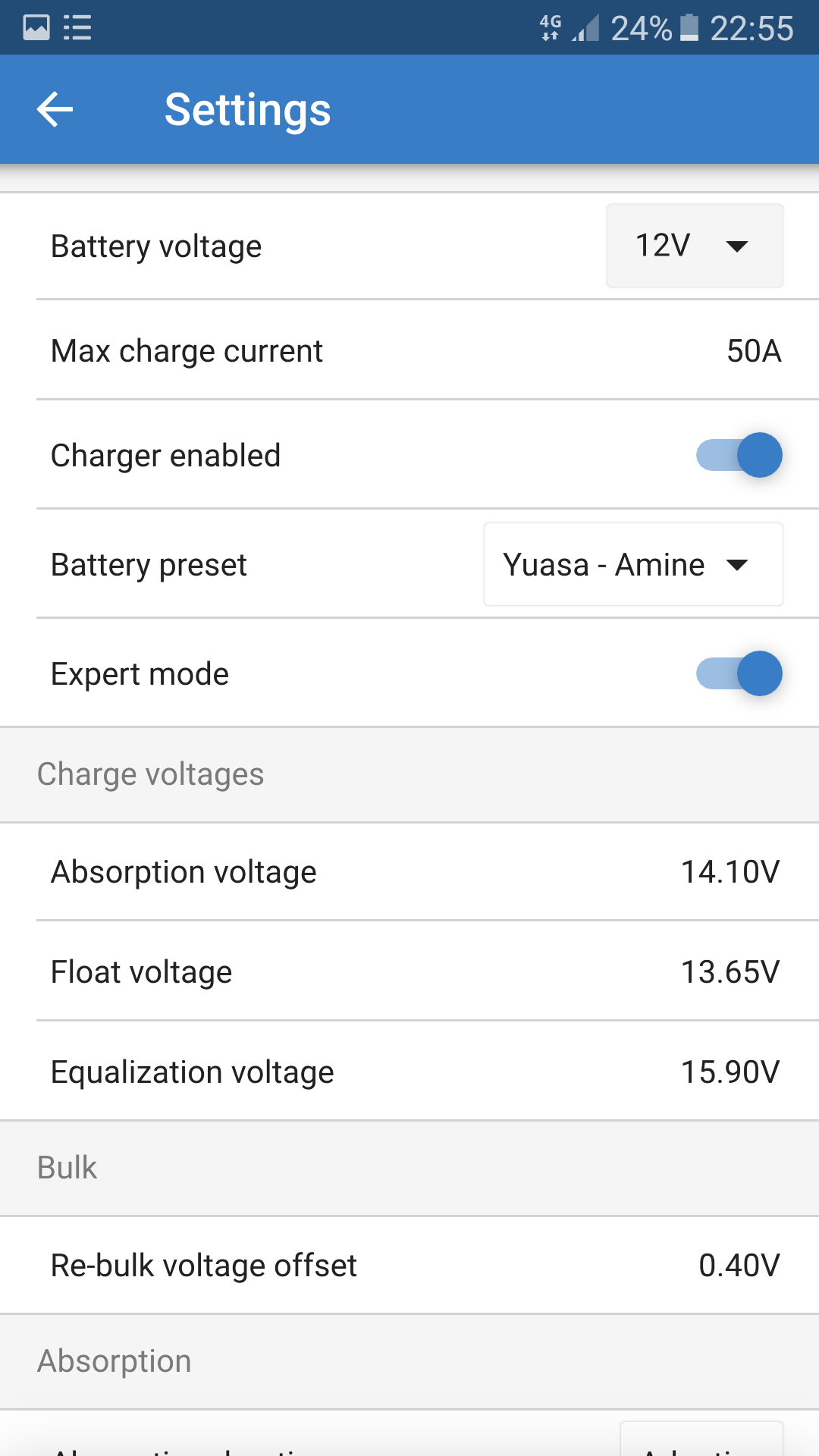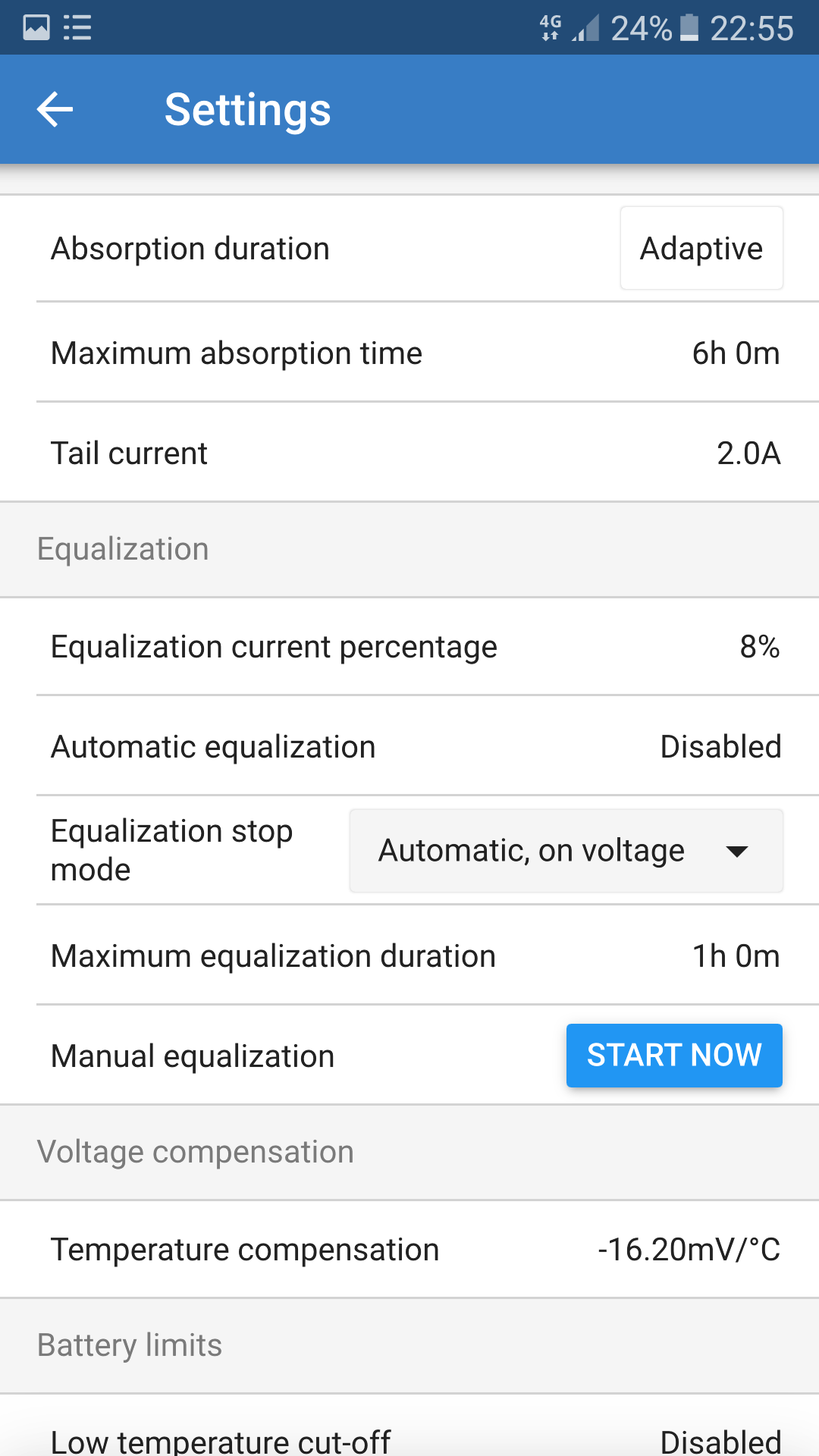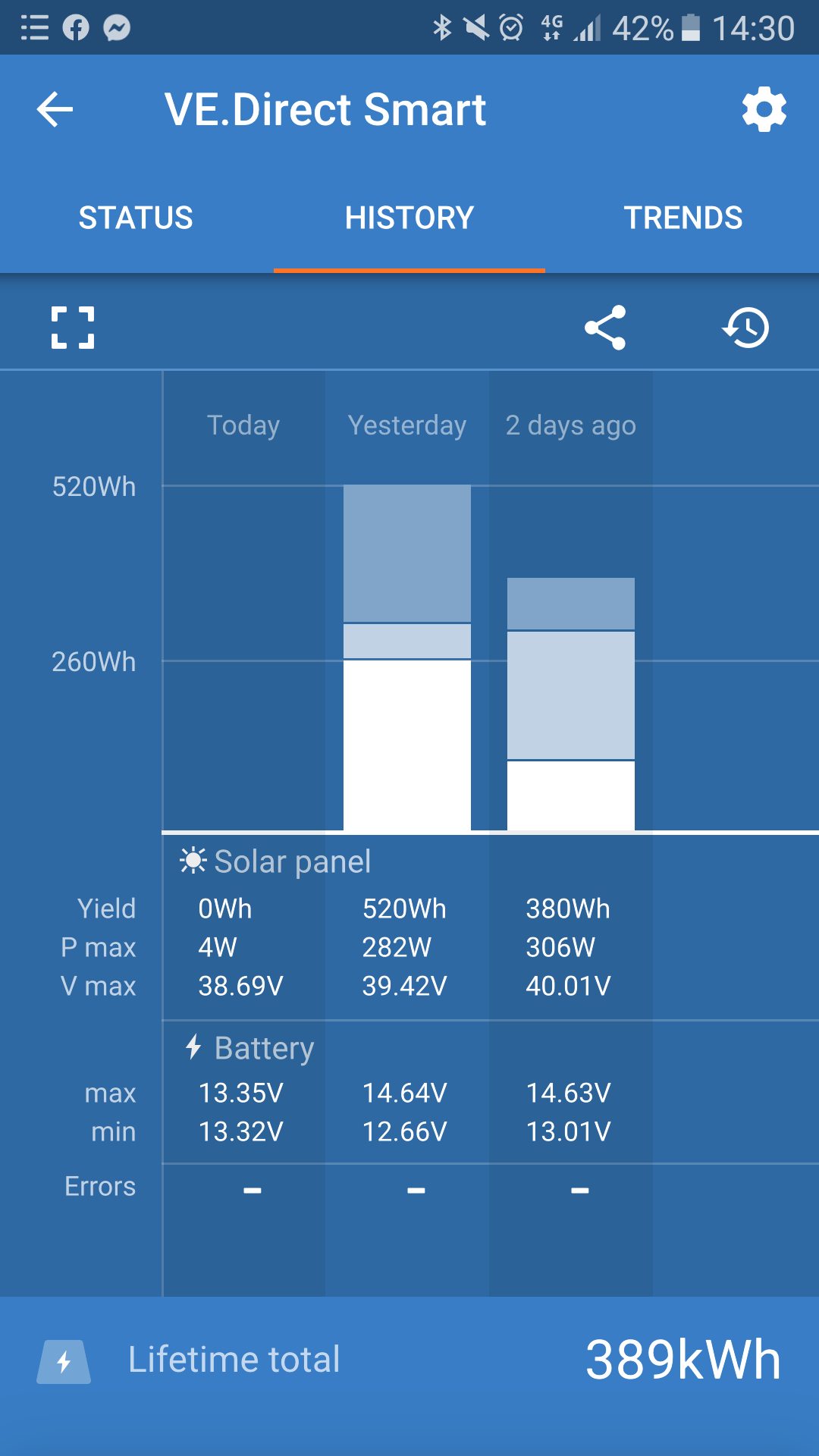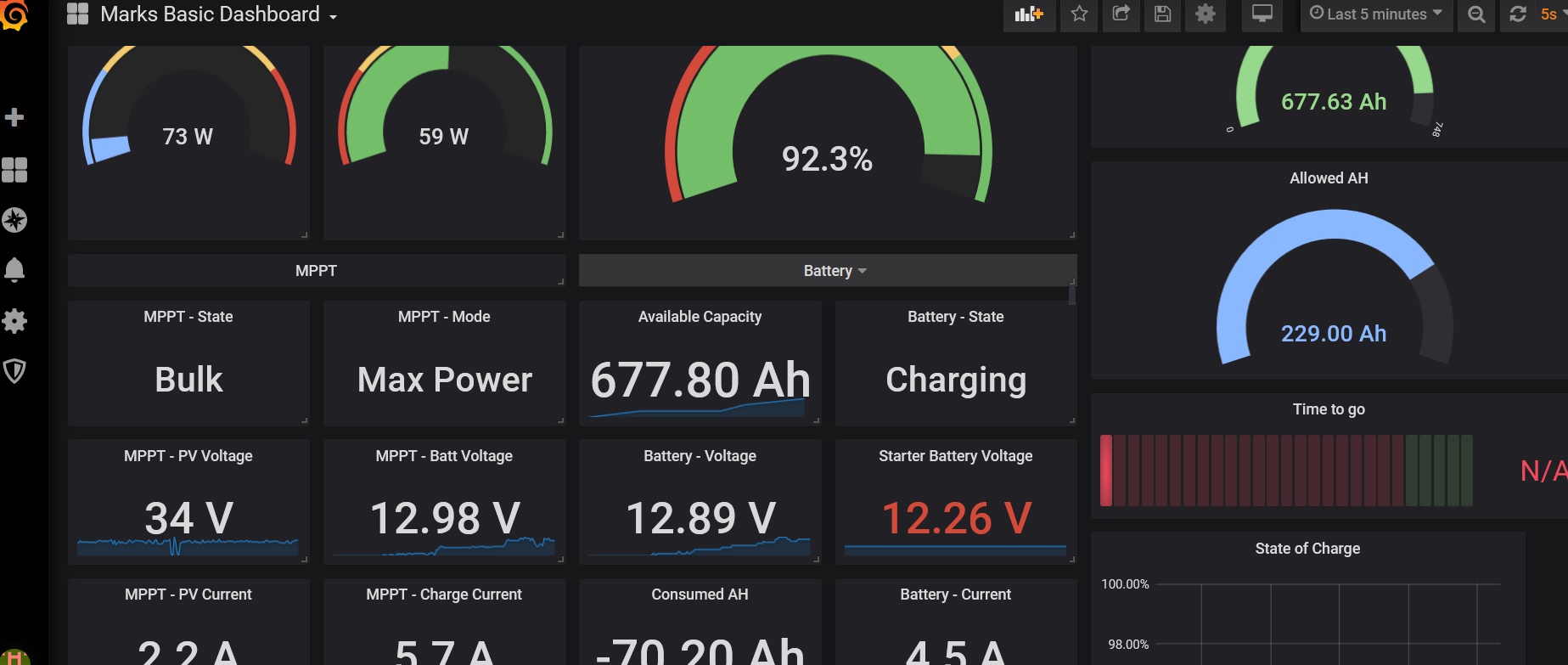Hi Guys, Thanks for the great community and support, I have always found this forum to be extremely helpful.
I seem to have an issue with the Smartshunt State of charge in a recent installation.
I have 8x 90AH 12v Yuasa batteries in parallel totalling 720AH.
I set the minimum discharge floor to 60% as my usage is minimal and I would be surprised if I reach that below 80%.
Now the Smartshunt indicate total consumed AH to be -48.1AH and the SOC to be 97%. I think this is inaccurate
Now if I do my math ( I could be ignoring many factors)
according to the set discharge floor of 60% I have 40% usable.
40% of 720AH = 288AH
Expected SOC = 100% -( 48.1/288)x100) = 83.2%
and not 97%
I am confused. can you please help :) below are screeshots and battery specs.
Many thanks
